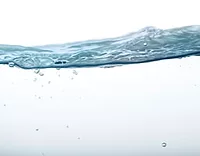Energy-Curable Lithographic Inks

Ink misting remains a challenge with energy-curable lithographic inks. Approaches to control misting or ink-fly include using inert fillers or other rheology modifiers to build ink body. While effective in reducing misting, these methods often adversely affect other ink properties.
In conventional inks, resin properties such as viscosity, internal cohesiveness
and viscoelasticity greatly influence their misting tendencies. Is the same
true of acrylated oligomers? In this paper we explore the relationship between
oligomer properties such as viscoelasticity and tack, and the oligomer’s
tendency to exhibit misting.

Tack, an ink term, can be defined as the cohesiveness of an ink film. This cohesiveness is responsible for the ink film’s resistance to splitting. The same definition can be applied to an acrylated oligomer. Every oligomer will have some degree of internal cohesiveness, or tack, and the oligomer’s chemical classification has a strong impact on its viscosity and tack (Table 1). Low-molecular-weight, high-viscosity epoxy acrylates have high oligomer tacks. In comparison, polyester acrylates have higher molecular weights and lower viscosities. Their oligomer tacks are relatively low.
As expected, the rheological properties of these oligomer types are also different. For confirmation, oscillation sweeps of selected epoxy and polyester acrylates were performed on a TA International AR 2000 rheometer. Results indicated that both oligomer types have low storage modulus (G’), but very different loss modulus; the epoxy acrylates had high G’ while the polyester acrylates were much lower. This difference in the loss modulus is supported by the differences in the apparent viscosities of epoxy and polyester acrylates.
The viscoelastic nature of these oligomers can be evaluated by comparing the ratio of their loss storage modulus or tan delta. It is accepted that a tan delta greater than one indicates a viscous nature and a tan delta less than one indicates elasticity.

Oligomer elasticity will allow the bonds to stretch and exhibit less rupturing under strain. This should result in lower oligomer misting. Table 2 shows oligomer tack, tan delta at the deflection point, and misting off the inkometer at 400 RPM. The more elastic polyester acrylate exhibits low oligomer misting but so does the more viscous epoxy acrylate. The lack of oligomer misting with the epoxy acrylates is a direct result of high internal cohesiveness. The strength of the intramolecular bonding causes this strong resistance to film splitting or misting. A notable exception to low misting with the polyester acrylates was the higher viscosity fatty acid modified oligomer. Under our test conditions, this particular polyester acrylate was determined to be viscous, not elastic. The higher oligomer misting can be attributed to its lower internal cohesiveness and lack of elasticity.
For the next phase of our evaluations, inks were prepared using the formulation in Table 3. The test oligomer was used in both the pigment dispersions and letdown portions of the ink. Ink tack testing was completed in accordance with ASTM test method, D 4361. The misting tendencies were identified by calculating the total color difference, DE, between unexposed charts and those placed beneath the inkometer rollers during misting testing.

Compared to epoxy acrylates, polyester acrylates have less hydrogen bonding. This leads to lower oligomer viscosity and tack. Polyester acrylates exhibit elasticity – there is less rupturing under strain. The inks made with polyester acrylates have suitably low ink tacks and low ink misting.
Conclusions
The rheological properties of acrylated oligomers have a major influence on ink properties. While viscous oligomers can be used to achieve lower misting, they will also have higher ink tacks, which could impact their usability and printability. The use of elastic oligomers allows the formulator increased latitude in developing inks with low ink tacks and low ink misting.
Acknowledgements
The author wishes to thank Ms. April Stevens, Chemical Technician, Graphics-RADCURE™ and Mr. Gordon Meyer, Scientist II, Industrial Coatings-RADCURE™, for their assistance offered on this study. For further information see www.cytec.com.
Looking for a reprint of this article?
From high-res PDFs to custom plaques, order your copy today!






